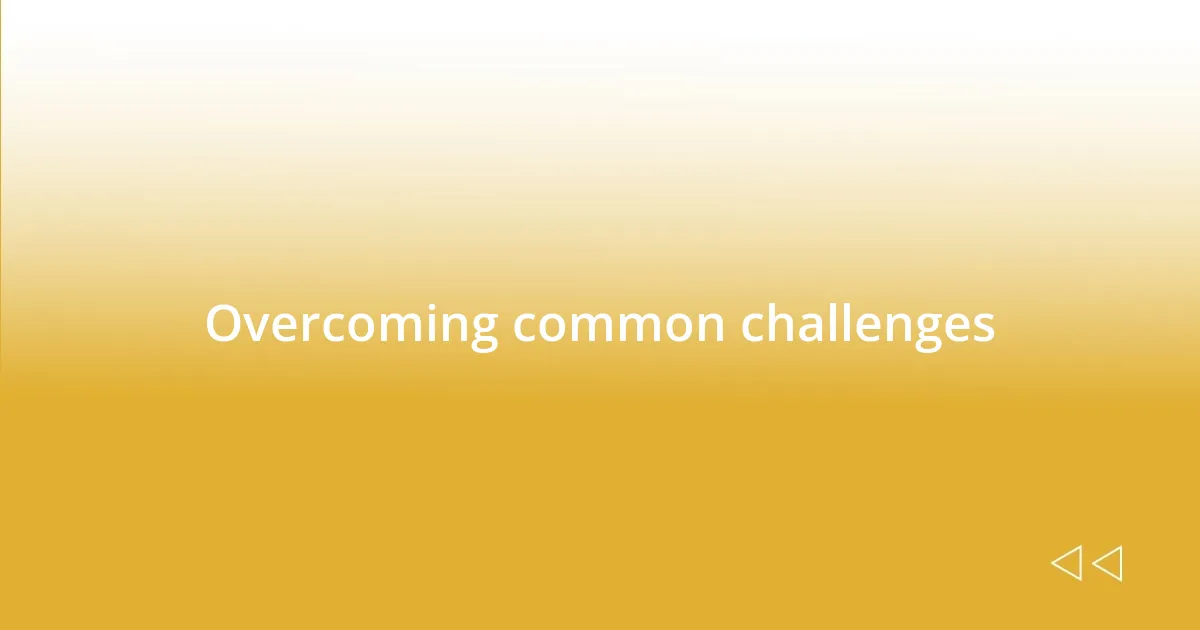Key takeaways:
- Remote training enhances connections and collaboration through tools like breakout rooms and interactive polls.
- Flexibility and recorded sessions improve accessibility and allow participants to learn at their own pace.
- Engaging participants through personal storytelling and clear expectations fosters a dynamic learning environment.
- Feedback surveys and tracking skill application help measure the effectiveness of training sessions.

Understanding remote training sessions
Remote training sessions have become a vital tool for skill development, especially in today’s fast-paced world. I remember my first online session, feeling curious yet apprehensive about how interactive it could really be. The experience quickly proved me wrong; the vibrant discussions and real-time feedback made it feel less like a lecture and more like a collaborative endeavor.
At times, I found myself wondering how effective virtual platforms could truly be in engaging participants. After several sessions, I realized that the right tools and techniques can create an atmosphere that’s just as stimulating as being in a physical classroom. It’s incredible how breakout rooms and instant polls can foster connections and conversations among participants, bridging that gap that distance inherently creates.
I’ve experienced moments of genuine connection during these sessions that I never expected. One time, during a team-building exercise, we shared personal stories about our backgrounds, and it turned into a heartfelt moment of camaraderie. It struck me how remote training can not only enhance our skills but also build stronger relationships in a digital age, allowing us to connect with colleagues we might never have met in person.

Advantages of remote training
Remote training sessions offer unparalleled flexibility, allowing participants to join from anywhere in the world. I recall one particular session where I was able to attend from my home office during a torrential downpour outside. This convenience made me appreciate how remote training eliminates logistical barriers like travel time and costs, making it easier for everyone to participate fully.
Additionally, the ability to record sessions provides a fantastic advantage. I’ve frequently revisited recorded workshops to refresh my memory on certain topics, allowing me to absorb the information at my own pace. This accessibility not only enhances learning but also supports participants who may need to balance training with other responsibilities.
Moreover, the diversity of perspectives in remote training can truly enrich discussions. I distinctly remember collaborating with colleagues from different continents, which brought fresh insights that I may not have encountered had we all been in a single location. This blend of ideas fosters creativity and innovation in ways that traditional settings often cannot.
| Advantage | Description |
|---|---|
| Flexibility | Participate from anywhere, reducing logistical barriers. |
| Recorded Sessions | Access sessions at your own pace for better retention. |
| Diverse Perspectives | Collaborate globally, enriching discussions with varied insights. |

Tools for effective remote training
When it comes to effective remote training, the selection of tools can make all the difference. I remember the first time my team introduced a collaborative whiteboarding tool during a brainstorming session. The excitement was palpable as we could all contribute ideas in real-time, turning a somewhat stagnant virtual discussion into a lively exchange of creativity. It was truly thrilling to see everyone’s thoughts visually mapped out, fostering a sense of shared ownership over the training process.
To optimize remote training, consider these essential tools:
- Video Conferencing Platforms: Tools like Zoom and Microsoft Teams facilitate face-to-face interaction and ensure everyone feels connected.
- Collaborative Whiteboards: Solutions such as Miro or Jamboard allow participants to brainstorm collectively, simulating in-person collaboration.
- Learning Management Systems (LMS): Platforms like Moodle or Canvas streamline content delivery, making resources easy to access and manage.
- Polls and Surveys: Tools like Mentimeter or Slido enable instant feedback, making sessions more interactive and responsive to participant needs.
I also discovered the power of chat features within these platforms. There was a moment during a particularly interactive session where participants were sharing resources and tips in real time; seeing everyone contributing their expertise was invigorating. It reminded me that sharing knowledge doesn’t stop with the trainer; everyone has something valuable to offer. This dynamic exchange added depth to our learning experience, reinforcing that collaboration in remote training can lead to unexpected insights and breakthroughs.

Strategies for engaging participants
Engaging participants in remote training sessions requires a bit of creativity and intentionality. One strategy I found particularly effective is to incorporate interactive elements like polls or breakout discussions. During one session, I asked participants to weigh in on a controversial topic using a quick poll. The rush of responses and varied opinions sparked lively small-group discussions that brought out passionate insights. It not only held everyone’s attention but also transformed the session into a more dynamic learning experience.
In my experience, storytelling can be an incredibly powerful tool to connect with participants. I remember sharing a personal anecdote about a challenge I faced that directly related to the training topic. This vulnerable moment not only resonated with the audience but fostered a deeper connection among participants. How often do we truly engage when we feel a personal narrative is being shared? It reminds us that we’re all navigating similar paths, and it encourages others to share their stories too.
Another approach that has worked wonders for me is setting clear expectations at the start of the session. I’ve learned that when participants know what to expect and how they can contribute, they tend to engage more actively. For instance, when I laid out specific roles for participants, such as “listener” and “speaker” for different parts of the discussion, it created a sense of purpose. Isn’t it fascinating how a little clarity can transform the level of involvement? This simple strategy can make all the difference in fostering an inclusive and engaging virtual environment.

Overcoming common challenges
One of the most common challenges I faced during remote training was maintaining participant focus. I often noticed some attendees drifting away, perhaps distracted by their surroundings. To combat this, I decided to implement quick, energetic icebreaker activities at the beginning of each session. I vividly recall one instance where I encouraged everyone to share their favorite snack while holding it up to the camera. Not only did this lighten the mood, but it also established a sense of community right from the get-go, making everyone more present.
Technical issues can frequently disrupt the flow of remote training. Early on, I encountered a frustrating situation when I lost audio connection just as I was explaining a key concept. Instead of letting it derail the session, I used humor to ease the tension, saying, “Looks like I’ve become a silent film star!” This small joke broke the ice and allowed participants to share their own technical hiccups, paving the way for a genuine, supportive exchange. It reminded me that we’re all in this together, making it easier to navigate challenges as a group.
Lastly, I found that fostering a culture of openness greatly alleviated the anxieties that often accompany remote training. At times, participants seemed hesitant to voice their questions or concerns. To create a more open environment, I implemented a practice of “virtual thumbs up or down” at the end of each segment. I shared my own questions, encouraging others to do the same. I remember a participant once saying, “I didn’t realize how much we could learn from each other’s uncertainties.” This simple method transformed silence into dialogue, empowering everyone to contribute without fear of judgment. Isn’t it amazing how a little vulnerability can spark meaningful conversations?

Measuring training effectiveness
Measuring the effectiveness of training sessions can often feel like trying to hit a moving target. In my experience, one of the most reliable methods is using feedback surveys immediately after the training. I recall a session where I implemented a quick survey as participants exited. Their candid responses provided insights that I would have missed otherwise. It was eye-opening to see how a single session could impact them and what themes resonated most.
Another approach I found insightful was tracking skill application in real-world scenarios. After one training on project management, I followed up with participants a few weeks later to see how they had applied what they learned. Many shared stories of overcoming obstacles using new techniques, such as prioritizing tasks more effectively. Hearing their success stories genuinely reinforced my belief in the training’s value.
Lastly, observing behavioral changes can signal the effectiveness of training. During a session focused on communication skills, I noticed a participant who typically shied away from speaking up began contributing more. It really struck me how the training engaged her confidence. This shift not only benefited her but also enriched the group dynamics altogether. It’s fascinating to see tangible changes in people—it makes all the effort worthwhile, doesn’t it?

Personal reflections and lessons learned
In reflecting on my experience with remote training, I’ve come to appreciate the importance of adaptability. I remember a session where we had to pivot mid-lesson due to unforeseen tech issues. Instead of following the original plan, I opened the floor for a spontaneous Q&A. This shift not only kept the energy alive but also made me realize that sometimes, the best learning moments happen outside structured environments. It was a reminder that flexibility can lead to unexpected insights.
Another lesson that stands out is the power of connection. Early on, I felt a bit isolated in leading these sessions. Then I introduced breakout rooms for small group discussions, and it transformed the atmosphere. I was amazed at the laughter and rapport building in those intimate settings. It’s incredible how a little bit of face-to-face interaction, even through a screen, can rekindle enthusiasm and foster collaboration. It left me wondering: how often do we underestimate the value of personal connection, even in virtual spaces?
Lastly, I realized the significance of acknowledging both progress and setbacks. I distinctly recall a participant who struggled with grasping a specific concept. During a feedback session, instead of glossing over it, I highlighted their journey and encouraged them to embrace the learning curve. Their eyes lit up, and they shared how that moment gave them the motivation to keep trying. It was a beautiful reminder that every step, whether forward or backward, plays a crucial role in personal growth. Have you ever experienced a situation where acknowledging a struggle turned into a breakthrough? I have, and those moments truly stick with me.















